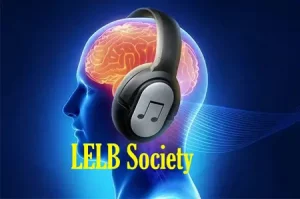The role of imitation in language acquisition and why it is so crucial. This article was written and narrated by Dr. Mohammad Hossein Hariri Asl.
Author: Dr. Mohammad Hossein Hariri Asl
Watch this video on the role of imitation in language acquisition
What is imitation?

Vygotsky (1987, as cited in Lantolf, 2006) proposed that the internalization of socially constructed forms of mediation occurs through the mechanism of imitation. One of the earliest scholars to propose imitation as a uniquely human form of learning and development was Baldwin (1895-1915, as cited in Lantolf, 2006). For Baldwin:
Imitation, especially what he called ‘persistent imitation’, to the intelligent and earnest imitator is never slavish, never mere repetition; it is, on the contrary, a means for further ends, a method of absorbing what is present in others and of making it over in forms peculiar to one’s own temper and valuable to one’s own genius (Valsiner & van der Veer, 2000, p. 153, as cited in Lantolf, 2006).
Stern’s Concept of Convergence
Stern takes care not to disregard the part that imitation plays in speech development, or the role of the child’s spontaneous activity, by applying to these issues his concept of ‘convergence’: The child’s conquest of speech occurs through a constant interaction of inner disposition prompting the child to speech and external conditions, i.e., the speech of people around him which provide both stimulation and material for the realization of these dispositions (Kozulin, 1986).
Persistent imitation entails cognitive activity; it is cyclic and reproductive, but each reproductive cycle works not on the original but on the previous imitation (Baldwin, nd, as cited in Lantolf, 2006).

The key to understanding internalization is Vygotsky’s notion of ‘imitation’ (Ellis, 2008). Vygotsky (1987, as cited in Lantolf, 2006), reflecting the thinking of Baldwin and others at the time, saw imitation as a complex and transformative activity and considered it to be “the source of all the specifically human characteristics of consciousness that develop in the child” (p. 210).
Newman and Holzman (1993, as cited in Lantolf, 2006) stressed that imitation is not about parroting others, but is about creating something new “out of saying or doing ‘the same thing’” (p. 151) that other members of the culture do.
Imitation vs. Emulation
Central to imitation is the capacity to map the goal of an activity on to the means through which it is carried out (Tomasello, 1999, as cited in Lantolf, 2006). This distinguishes imitation from emulation, in which the goal is recognized but the means is not. Humans are able to match the goal and the means of achieving some activity (imitation), whereas other primates, such as chimps, are able to recognize the goal of an activity without understanding the relevance of the means (emulation). Both imitation and emulation are distinguished from mimicry by virtue of the fact that in the latter, an understanding of the goal is also absent.

Yerkes and Learned (1925, as cited in Kozulin, 1986) maintain:
Vocal reactions are very frequent and varied in young chimpanzees, but speech in the human sense is absent. Their vocal apparatus is as well developed and functions as well as man’s. what is missing is the tendency to imitate sounds. Their mimicry is almost entirely dependent on optical stimuli; they copy actions but not sounds. They are incapable of doing what the parrot does so successfully: If the imitative tendency of the parrot were combined with the caliber of intellect of the chimpanzee, the latter undoubtedly would possess speech, since he has a voice mechanism comparable to man’s as well as an intellect of the type and level to enable him to use sounds for purposes of real speech (p. 53).

First Language Acquisition
According to Lightbown and Spada (2006), over the past fifty years, three main theoretical positions have been advanced to explain language development from infancy through the early school years. These three positions are: ourism, ibehavinnatism, and interactionism.
Behaviorism: Say what I say

Behaviorism was a theory of learning that was very influential in the 1940s and 1950s, especially in the United States. With regard to language learning, the best-known proponent of this psychological theory was B.F. Skinner. Traditional behaviorists hypothesized that when children imitated the language produced by those around them, their attempts to reproduce what they heard received ‘positive reinforcement’. This could take the form of praise or just successful communication (Lightbown & Spada, 2006).
Encouraged by their environment, children would continue to imitate and practice these sounds and patterns until they formed ‘habits’ of correct language use. According to this view, the quality and quantity of the language the child hears, as well as the consistency of the reinforcement offered by others in the environment, would shape the child’s language behavior. This theory gives great importance to the environment as the source of everything the child needs to learn (Lightbown & Spada, 2006).

Lieven (1994, as cited in Michelle & Myles, 2004) points out that even in cultures where child-directed speech of the Western type is rare or absent, children are constantly in group settings, and surrounded by contextualized talk routines. In such settings, their early utterances frequently include partial imitations and the production of unanalyzed and rote-learned segments, picked up in routinized situations (Lieven, 1994, p. 62, as cited in Michelle & Myles, 2004).
Second Language Acquisition
Like first language learners, second language learners produce many sentences that they could not have heard. For some advanced learners who are determined to improve their pronunciation, careful listening and imitation in a language laboratory can be very effective. But for beginning learners, the slavish imitation and rote memorization that characterized Audiolingual language approaches to language teaching can lead to a dead end (Lightbown & Spada, 2006). They (2006) further add:
Learners need to do more than recite bits of perfectly accurate language. They learn as they make the effort needed to understand and make themselves understood in genuinely meaningful interaction. Otherwise, they may have acquired little more than a collection of sentences, waiting for the moment when those sentences will be useful (p. 184).

In relation to the legitimate use of imitation, Brown (2007) argues that a very limited portion of classroom speaking time may legitimately be spent generating ‘human tape recorder’ speech, where, for example, learners practice an intonation contour or try to pinpoint a certain vowel sound. Imitation of this kind is carried out not for the purpose of meaningful interaction, but for focusing on some particular elements of language form.
Drilling
In response to drilling, the crucial question is whether it is a legitimate part of the communicative language classroom. According to Brown (2007), the answer is a qualified yes. He (2007) defines drills as:
Drills offer students an opportunity to listen and to orally repeat certain strings of language that may pose some linguistic difficulty—either phonological or grammatical. Drills are to language teaching what the pitching machine is to baseball. They offer limited practice through repetition. They allow one to focus on one element of language in a controlled activity. They can help to establish certain psychomotor patterns and to associate selected grammatical forms with their appropriate context (pp. 328-329).
Here are some useful guidelines for successful drills:
- Keep them short (a few minutes of a class hour only).
- Keep them simple (preferably just one point at a time).
- Keep them “snappy”.
- Make sure students know why they are doing the drill.
- Limit them to phonology or grammar points.
- Make sure they ultimately lead to communicative goals.
- Don’t overuse them (Brown, 2007, p. 329).
Kenworthy (1987, as cited in Jones, 1997) believes that the benefits of imitation drills may depend on learners’ aptitude for oral mimicry. For learners without good ears, drills may cause production to stabilize before reading the target.
To be truly effective, “drills have to move beyond the simple identification and mimicking of decontextualized sound contrasts to the perception of more meaningful, communicative characteristics of input” (Wong, 1987, p. 180, as cited in Jones, 1997).
Formulaic Speech

The clearest evidence for the role of imitation is provided by set phrases, i.e. formulaic speech, that learners often produce as a means of copying with common or important situations in their environment (Davies & Elder, 2006). It is believed that the phrases result from imitation comes from the fact that the learner’s other output shows no evidence that he/she has mastered the grammar that underlies them. As a matter of fact, a learner may regularly use phrases at an early stage of learning, although they don’t have enough grammar knowledge to produce them.
Formulaic speech is an important feature of second language use and learning (Wray, 2000). On the one hand, like simplification, it gives speakers the linguistic tools for copying with situations that would otherwise be beyond their competence. On the other hand, it may provide them with a memorized store of language samples which they can process internally, so that the underlying rules gradually become incorporated into their developing linguistic competence.
Habit Formation

According to Jones (1997), part of the reason for the focus on habit formation in acquiring L2 phonology is the special characteristics of pronunciation, which, unlike other language skills, involves both cognitive and motor functions.
Gass (1997) maintains:
In behaviorist views of language learning, input was central to an understanding of how learners acquired a language, first or second. Imitation and habit formation were primary concepts in this process. If habits were formed through imitation, then it was necessary to examine the input to learners to determine what they were imitation. It was necessary to examine the relationship between the input (what was to be imitated) and production (the product of imitation) (p. 171).
Elicited Imitation Tests
One device that has been widely used in SLA is elicited imitation. According to Barkhuizen and Ellis (2005), learners listen to a set of sentences one at a time, the sentences having been constructed to contain examples of the target feature. After each sentence, they try to imitate it. The idea underlying this procedure is that if the sentences are long enough, the learners will not be able to memorize the exact words in the sentence but will have to process it for meaning and thus, when called upon to imitate it, will need to re-encode the meaning using their own linguistic resources.

Claims have been made that elicited imitation tests, traditionally designed to test learners’ knowledge of precise grammatical factors (e.g. Gallimore & Tharp, 1981; Hamayan et al., 1977; Munnich et al., 1994, as cited in Erlam, 2006), provide accurate representations of a learner’s interlanguage system.
The claim is that in order for the learner to be able to correctly imitate the target language structure, it must be part of the learner’s interlanguage system. In this response, Erlam (2006) maintains, “In order to examine the question of whether elicited imitation tests are reconstructive or whether they allow for rote imitation, it is important to consider evidence from recent research in cognitive psychology on working memory” (p. 467).
Ellis (2005, as cited in Barkhuizen & Ellis, 2005) describes an elicited imitation test that incorporated a dual purpose to distract learners from attempting to memorize the sentences prior to production; the sentences to be imitated consisted of belief statements to which learners were asked to respond by agreeing/disagreeing before they attempted to imitate them.

Working memory has replaced the traditional behavioristic understanding of memory which proposed that short-term retention was a function of short-term memory capacity and that it was uninfluenced by learners’ long-term knowledge of language (Speciale, 2004, as cited in Erlam, 2006).
Recent experimental studies have shown that the more non-wordlike non-words are, the greater the difficulty participants will experience in repeating sequences of such words (Gathercole & Baddeley, 1993, as cited in Erlam, 2006). It is claimed that this is because participants have not had any prior experience with the material they are being asked to recall and so have not had the opportunity to build up long-term memory representations.
Ellis (2001, as cited in Erlam, 2006) adds, “this is why elicited imitation tests serve so well as measures of second-language competence” (p. 48). Results from such research suggest that the capacity of working memory is determined by the stored knowledge that already exists about the language (Baddeley et al., 1998, as cited in Erlam, 2006).
According to Gass and Selinker (2008), a common way to collect data is elicited imitation which allows a precise experimental design, usually including similar structures that vary along only one linguistic dimension. Thus, this technique can be used to target a specific linguistic area. As the term implies, this is a technique whereby a subject hears a sentence (often tape-recorded) and then is asked to repeat it exactly.
If the sentence is long enough, the subject will not be able to remember the sound and repeat it. It is therefore stored as a semantic unit and the learner has to recreate the sentence using his/her knowledge of the second language. This then gives the researcher an indication of the structure of the learner’s grammar.
During the 1950s and 1960s, there were challenges to the behaviorist theory of language and language learning. Language came to be seen not as a set of automatic habits, but as a set of structured rules. These rules were claimed to be learned not by imitation, but by actively formulating them on the basis of innate principles as well as on the basis of exposure to the language being learnt (Gass & Selinker, 2008).
Criticism
Behavioristic theories of language learning were seriously challenged by Chomsky (1959, as cited in Hadley, 2003) in a very critical review of Skinner’s work. Chomsky maintained that language behavior was far more complex than the establishment of S-R connections. It was shown that imitation and reinforcement have a much smaller role to play in child language than Skinner and his colleagues imagined.
In this response, Ellis (1997) argues:
Behaviorism cannot adequately account for L2 acquisition. Learners frequently do not produce output that simply reproduces the input. Furthermore, the systematic nature of their errors demonstrate that they are actively involved in constructing their own rules, rules that sometimes bear little resemblance to the patterns of language modeled in the input. In short, learning is not just a response to external stimuli (p. 32).
According to Lightbown and Spada (2006), it is difficult to find support for the argument that languages are learnt mainly through imitation. Learners produce many novel sentences and utterances that they could not have heard before. These sentences are based on their developing understanding of how the language system works. According to Cook and Newson (1996):
In all Chomskyan models a characteristic of competence is its creative aspect; the speaker’s knowledge of language must be able to cope with sentences that it has never heard or produced before. E-language depends on history – pieces of language that happen to have been said in the past. I-language competence must deal with the speaker’s ability to utter or comprehend sentences that have never been said before (p. 63).

As Lightbown and Spada (2006) have said, in the case of second language learners who say “The cowboy rided into town”, or “The man that I spoke to him is angry”, we notice some novel utterances that are not grammatical. These examples and many others provide evidence that language learners do not simply internalize a great list of imitated and memorized sentences.
According to James (2001), this phenomenon is referred to as ‘overgeneralization’ when the error is the result of trying to use a rule in a context where it does not belong. For example, a regular –ed ending on an irregular verb, as in ‘buyed’ instead of ‘bought’.
This does not mean, however, that imitation has no role to play in language learning (Lightbown & Spada, 2006). Instead, language learners selectively imitate certain words or structures that they are in the process of learning. Thus, “imitation may be an individual learning strategy but it is not a universal characteristic of language learners” (Lightbown & Spada, 2006, p. 183).
While it is recognized that the environment plays a role in language acquisition, what precisely is meant by the environment and how it influences development remains unclear (Lantolf, 2006). On the one hand, they seem to posit an autonomous learner equipped with mechanisms such as intention, detection, imitation, sequential abilities, analogy, who then operates on the affordances available in a relatively inert environment.
According to Lantolf (2006), “Emergence in language acquisition takes place at the level of individual learners, as a result of the interactions between innate abilities in learners and their experiences in the environment” (p. 722), a position that seems to be more in line with a classic Piagetian rather than a Vygotskyan psychology.
In the 1960s, the behaviorist theory of language and language learning was challenged. Language came to be seen in terms of structured rules instead of habits. Learning was seen not as imitation but as active rule formation (Gass & Selinker, 2008). Second language errors are not a reflection of faulty imitation. Rather, they are to be viewed as indications of a learner’s attempt to figure out some system, that is, to impose regularity on the language the learner is exposed to.
There has been some discussion in the literature (e.g. McDade et al., 1982, as cited in Erlam, 2006) suggesting that elicited imitation may not be reconstructive in nature and that it may allow for the simple rote imitation of stimuli presented.
Conclusion
Perhaps the oldest method of teaching pronunciation involves exercises in elocution: imitation drills and reading aloud. Although now widely discredited in the areas of grammar and vocabulary teaching, the ‘listen and repeat’ approach has persisted in the teaching of pronunciation (Jones, 1997).

According to Pennington (1996, as cited in Jones, 1997), it appears that although both imitation and discrimination drills have an important place in the teaching of pronunciation as a means to help articulation become more automatic and routinized, they are best seen as a step towards more meaningful, communicative practice.
In terms of learning purpose and language use as two crucial keys to social relevance of an L2 program, Cook, 1992, as cited in Kumaravadivelu, 2006) argues:
In these contexts, learners are seldom exposed to the full range of their L2 in all its complexity that one would expect in a context where it is used as the primary vehicle of communication. In the use of an L2, the learner is not becoming an imitation native speaker, but a person who can stand between the two languages, using both when appropriate (p. 583).
References
- Barkhuizen, G., & Ellis, R. (2005). Analyzing learner language. Oxford: Oxford University Press.
- Brown, H. D. (2007). Teaching by principles: An interactive approach to language pedagogy (3rd Ed.). White Plains, NY: Pearson Education, Inc.
- Cook, V. J., & Newson, M. (1996). Chomsky’s universal grammar: An introduction. Malden, Massachusetts, MM: Blackwell Publishers Inc.
- Davies, A., & Elder, C. (2006). The handbook of applied linguistics. Malden, MA. USA: Blackwell Publishing, Ltd.
- Ellis, R. (1997). Second language acquisition. Oxford: Oxford University Press.
- Ellis, R. (2008). The study of second language acquisition. Oxford: Oxford University Press.
- Erlam, R. (2006). Elicited Imitation as a measure of L2 implicit knowledge: An empirical validation study. Applied Linguistics, 27(3), 464–491. doi:10.1093/applin/aml001
- Gass, S. M. (1997). An interactionist perspective on second language acquisition. In R. B. Kaplan (Ed.), The Oxford handbook of applied linguistics (pp. 170-181). Oxford: Oxford University Press.
- Gass, S. M., & Selinker, L. (2008). Second language acquisition: An introductory course. New York: Routledge, Taylor and Francis Group.
- Hadley, A. O. (2003). Teaching language in context. Boston Massachusetts, BM: Heinle & Heinle Publishers.
- James, P. (2001). Teachers in action: Tasks for in-service language teacher education and development. Cambridge: Cambridge University Press.
- Jones, R. H. (1997). Beyond ‘listen and repeat’: Pronunciation teaching materials and theories of second language acquisition. In W. A. Renandya & J. C. Richards (Eds.), Methodology in language teaching: An anthology of current practice (pp. 178-187). Cambridge: Cambridge University Press.
- Kozulin, A. (1986). Thought and language: Lev Vygotsky. Cambridge: The MIT Press.
- Kumaravadivelu, B. (2006). Understanding language teaching, from method to postmethod. Mahwah, New Jersey: Lawrence Erlbaum Associates, Inc.
- Lantolf, J. P. (2006). Language emergence: Implications for Applied Linguistics—A sociocultural perspective. Applied Linguistics, 27(4), 717-728. doi:10.1093/applin/aml034
- Lantolf, J. P. (2006). Sociocultural theory and L2. SSLA, 28, 67–109. doi:10.10170S0272263106060037
- Lightbown, P. M., & Spada, N. (2006). How languages are learned. Oxford: Oxford University Press.
- Mitchell, R., & Myles, F. (2004). Second language learning theories (2nd Ed.). London: Hodder Arnold.
- Wray, A. (2000). Formulaic sequences in second language teaching: Principle and practice. Applied Linguistics, 21(4), 463-489. doi:10.1093/applin/21.4.463
How to cite this article in APA Style?
Hariri Asl, M. H. (2023). The role of imitation in language acquisition + best tips. LELB Society, https://lelb.net/the-role-of-imitation-in-language-acquisition/



